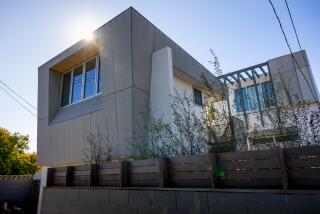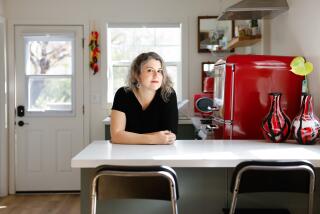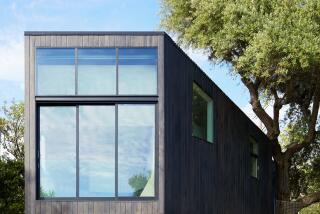Habitat for Humanity building a model of efficiency
MINNEAPOLIS — Nakeia and Ramell Dismond are like most working-class families: After the rent is paid, they have no money left in the budget for their kids’ activities or vacations.
That will change in a couple of months when they purchase a new home on the west edge of River Falls, Wis. Crews there are building a housing development that will produce all its own power, saving homeowners hundreds of dollars each month.
The project is the largest of its kind in the nation for Habitat for Humanity, the sixth-biggest U.S. home builder last year. The nonprofit says the development will create affordable housing at a time when mortgages have become tougher to get. It will also serve as a national model, showing for-profit developers that homes can be energy-efficient and economical on a large scale.
“A project of this size helps propel us further along that green and sustainable path,” said Matt Clark, director of construction technologies at Habitat headquarters in Atlanta. “As an industry, we all need to be moving toward green and sustainable solutions.”
The Eco-Village will create its own power through a combination of solar panels, geothermal heating and other energy-saving measures, then sell the power back to the utilities. When finished, the development will have 18 single-family and attached homes as well as a park. The St. Croix Valley Chapter of Habitat is building the Eco-Village on a once-neglected site along the edge of downtown River Falls, about 40 miles east of the Minneapolis-St. Paul area.
Susan Roeder, manager of corporate affairs for window and door maker Andersen Corp., and more than 50 volunteers from that company were recently at the site helping prepare the concrete foundations. They installed trusses and floor decking as well as set up the wall system.
Roeder said the company’s foundation donated $100,000, along with energy-efficient windows for all 18 homes. In addition, Habitat is tapping the expertise and generosity of several local companies, including Werner Electric Supply, a regional distributor of electric products. The city of River Falls donated the 7.5-acre parcel.
The Dismonds and other future homeowners are making an investment too. Habitat requires homeowners to put in at least 500 hours of “sweat equity” by helping build their house or another one.
The project is also getting technical support from the University of Wisconsin in River Falls. Kelly Cain, director of the university’s St. Croix Institute for Sustainable Community Development, is providing expertise to help the project achieve an unprecedented level of sustainability. The Eco-Village is expected to be the biggest net-zero project in the country, meaning that it won’t consume more energy than it produces.
Cain said the project sets a new standard for low- to moderate-income development nationwide.
“We’re pushing these homes off the charts in terms of our pursuit of building efficiencies,” he said, noting that the program goes well beyond the requirements of Energy Star and LEED, two well-known efficiency standards for new houses.
The houses will be heated and cooled with photovoltaic arrays on the roofs and a geothermal heat pump system. Rainwater will be harvested for landscaping and gardening. The walls, floors and ceilings will go far beyond even the most stringent insulation requirements. And residents will share a car with neighbors and will harvest herbs, fruits and vegetables from a community garden and an “edible landscape” that will surround houses.
Although the project is far from finished, planners are already touting it as proof that sustainability on a large scale can be achieved.
“I think it says that if we can make it work at a nonprofit, then for-profit builders should be able to figure it out,” Cain said.
And in River Falls, a bucolic college town near the Minnesota-Wisconsin border, the project helps bridge a gap in the supply of affordable housing. Many of the people who live in the city commute to jobs in the Twin Cities but have trouble finding housing that’s affordable and permanent.
That was true for the Dismonds, who now rent a town house that costs more than $800 a month, not including a $200 to $300 monthly utility bill.
Before attending a meeting about Eco-Village, they shopped for a foreclosure. Although there were plenty to choose from, most needed more work than the Dismonds could afford. When they close on their new house they’ll have a mortgage of $130,000 to $140,000 with a payment of $500 to $600 a month — and a much smaller utility bill too.
“We didn’t see ourselves ever owning a home until this opportunity came along,” Nakeia Dismond said.
Buchta writes for the Star Tribune (Minneapolis)/McClatchy.






